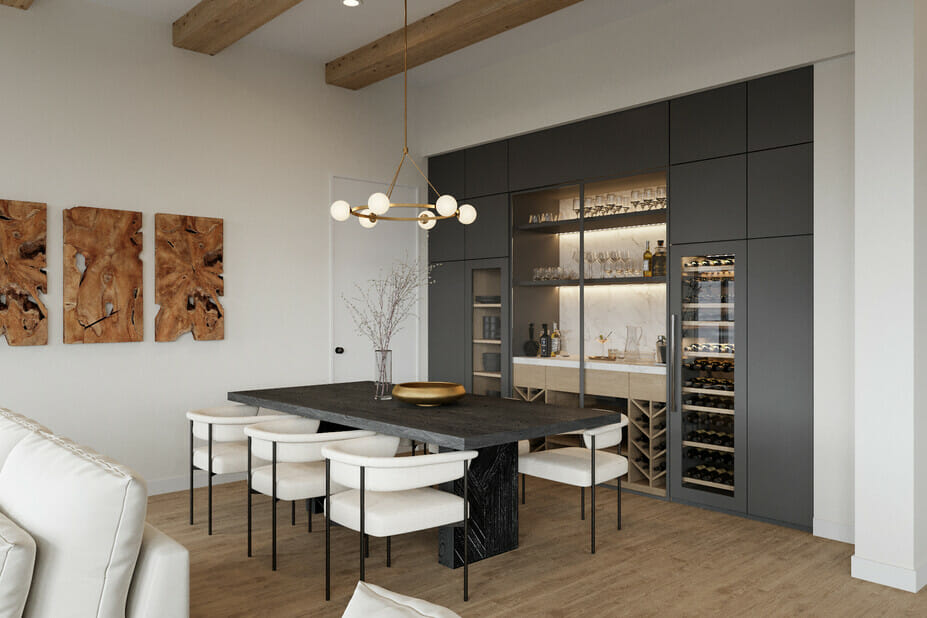In recent times, the concept of short term rental sustainable design has gained significant traction among travelers and property owners alike. As the world becomes more conscious of environmental impacts, the accommodation industry is seeing a paradigm shift towards eco-friendly practices. The demand for sustainable design in short-term rentals is not just a trend but a necessity for the future. This article explores the various aspects of integrating sustainability into short-term rentals, offering insights and practical advice for property owners and travelers.

Understanding Sustainable Design
At its core, sustainable design aims to minimize negative environmental impacts through thoughtful design and resource usage. It involves using materials that are environmentally friendly, reducing waste, and ensuring energy efficiency. For those in the short-term rental market, adopting sustainable design principles means providing accommodations that are not only aesthetically pleasing but also environmentally responsible.
Why Is Sustainable Design Important?
The importance of sustainable design cannot be overstated. With the growing awareness of climate change and environmental degradation, individuals and businesses are increasingly seeking ways to reduce their carbon footprint. In the context of short-term rentals, sustainable design not only helps in preserving the environment but also enhances the overall guest experience, potentially leading to increased bookings and positive reviews.
Benefits of Sustainable Design in Short-Term Rentals
Adopting sustainable design in short-term rentals offers numerous benefits. Firstly, it can lead to cost savings through reduced energy consumption and lower utility bills. Secondly, it appeals to a growing segment of eco-conscious travelers who prefer staying in accommodations that reflect their values. Furthermore, sustainable design can enhance a property’s marketability, differentiating it from competitors who have not yet embraced these practices.
Energy Efficiency
One of the key elements of sustainable design is energy efficiency. This can be achieved through the installation of energy-efficient appliances, the use of LED lighting, and the incorporation of smart home technologies that optimize energy usage. By reducing energy consumption, property owners not only contribute to environmental preservation but also save on operational costs.
Incorporating Eco-Friendly Materials
Utilizing eco-friendly materials is another crucial aspect of short term rental sustainable design. This includes using recycled or sustainably sourced materials for furniture, flooring, and decor. Additionally, opting for non-toxic paints and finishes can improve indoor air quality, creating a healthier environment for guests.
Water Conservation
Water conservation is an integral component of sustainable design. Installing low-flow fixtures, such as faucets and showerheads, can significantly reduce water usage. Property owners can also consider implementing rainwater harvesting systems to further enhance water efficiency.
Creating a Sustainable Guest Experience
In addition to the physical aspects of sustainable design, creating an eco-conscious guest experience is vital. This can be achieved by providing guests with information about the property’s sustainable features and encouraging them to participate in sustainable practices during their stay. Simple actions, such as recycling, minimizing water usage, and utilizing public transportation, can make a significant difference.
Engaging Guests
Engaging guests in sustainable practices can be done through clear communication and education. Providing a welcome guide that outlines the property’s eco-friendly features and offers tips for sustainable living can enhance the guest experience and foster a sense of responsibility.
Challenges and Solutions
While the benefits of short term rental sustainable design are clear, there are challenges to implementation. Initial costs can be a barrier for some property owners. However, these can often be offset by the long-term savings achieved through reduced energy and water consumption. Additionally, many governments offer incentives and rebates for implementing sustainable practices, which can alleviate the financial burden.
Overcoming Obstacles
To overcome these challenges, property owners can start by making gradual improvements, focusing on the most impactful changes first. Collaborating with sustainability experts and staying informed about the latest trends and technologies in eco-friendly design can also facilitate a smoother transition.
The Future of Sustainable Design in Short-Term Rentals
The future of sustainable design in short-term rentals looks promising, with increasing awareness and demand for eco-friendly accommodations. As more travelers prioritize sustainability, property owners who embrace these practices will likely see a competitive advantage. The integration of cutting-edge technologies and innovative design solutions will continue to shape the industry, offering exciting opportunities for both hosts and guests.
Conclusion
In conclusion, short term rental sustainable design represents a vital step towards a more sustainable and environmentally conscious future. By adopting eco-friendly practices, property owners can not only reduce their environmental impact but also enhance the guest experience and improve their bottom line. Whether you are a traveler seeking eco-friendly accommodations or a property owner looking to make a positive change, sustainable design offers a path forward that benefits everyone.

FAQs
What is sustainable design in short-term rentals?
Sustainable design in short-term rentals involves the use of eco-friendly materials, energy-efficient systems, and water conservation practices to minimize environmental impact and enhance guest experiences.
How can property owners implement sustainable design?
Property owners can implement sustainable design by using energy-efficient appliances, incorporating recycled materials, installing water-saving fixtures, and educating guests about sustainable practices.
What are the benefits of sustainable design for travelers?
For travelers, sustainable design offers healthier living environments, reduced carbon footprints, and the opportunity to support eco-conscious businesses. Staying in sustainably designed properties can enhance their travel experience and align with their environmental values.
This article contains affiliate links. We may earn a commission at no extra cost to you.

